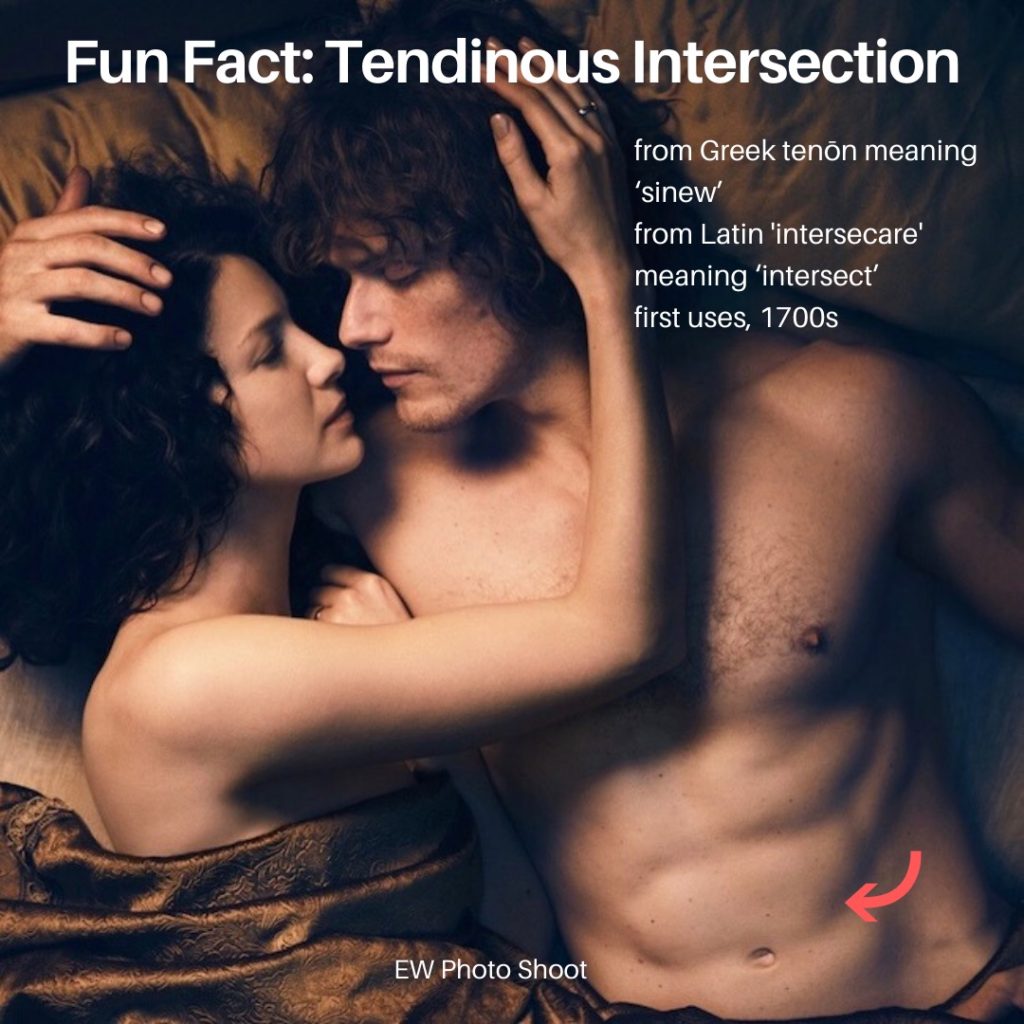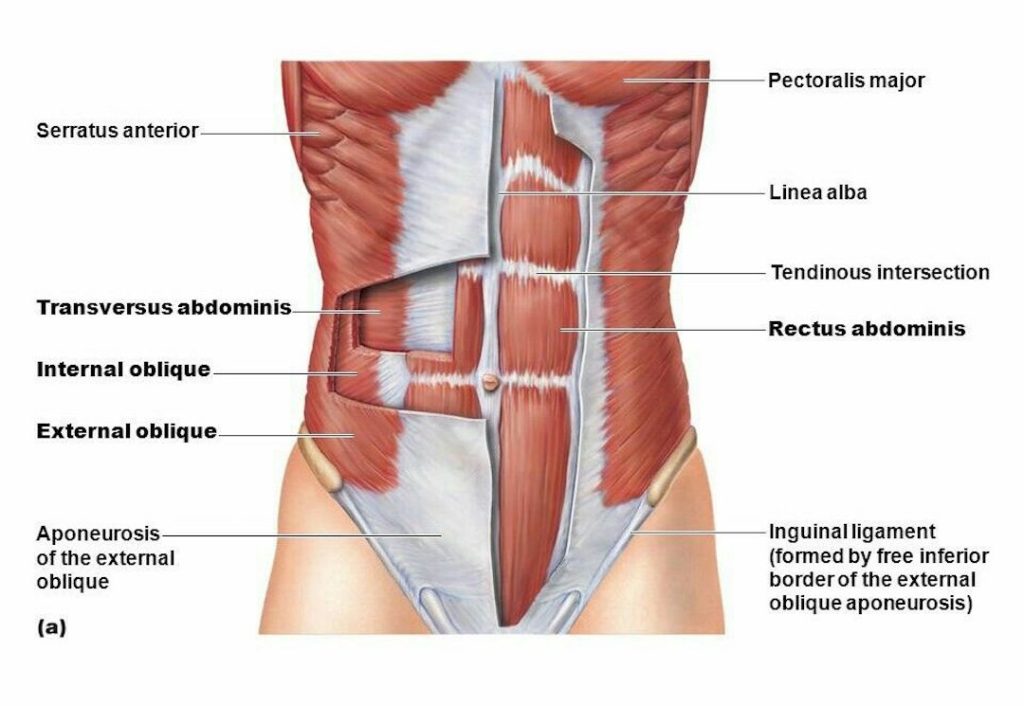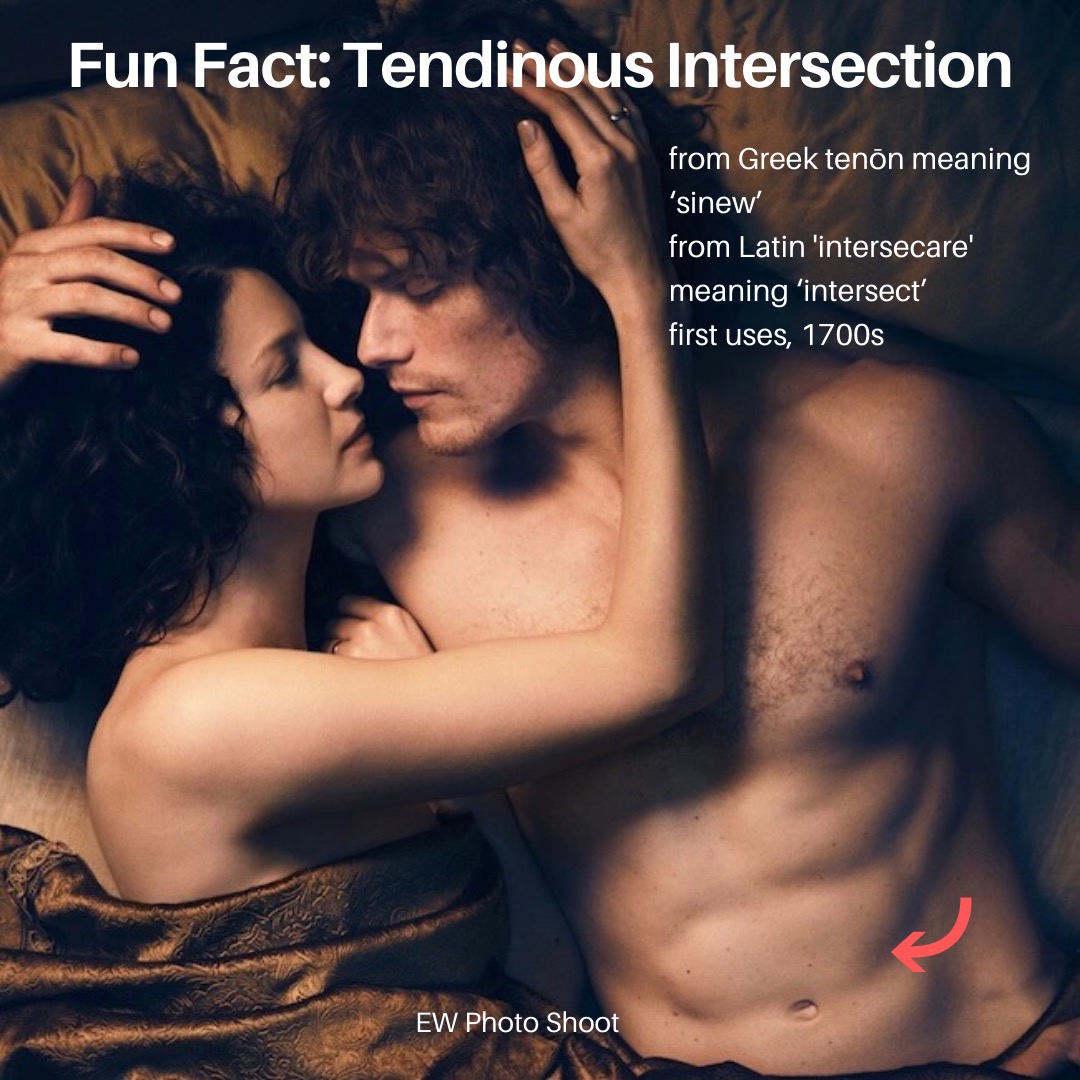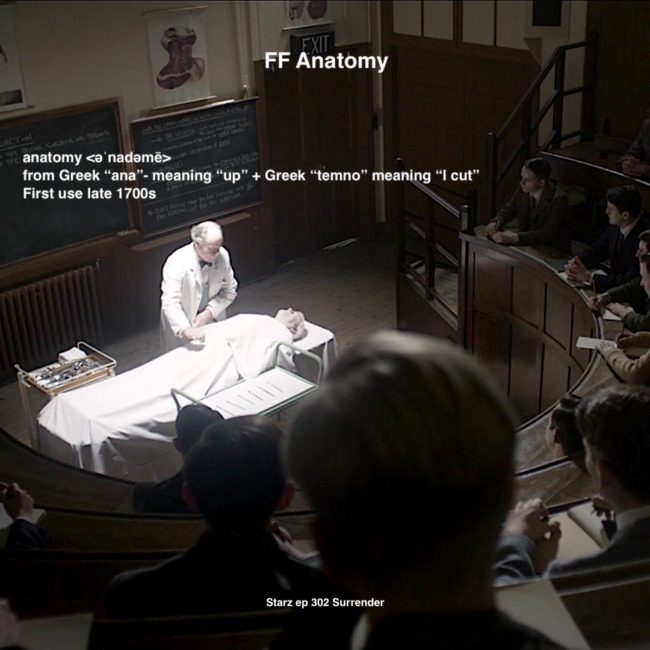
Anatomy Def: Tendinous intersections are fibrous bands crossing the rectus abdominis muscles and marked by overlying skin grooves (curved red arrow).
Outlander Def: Belly grooves defining Jamie’s six-pack. Woot!
Learn about tendinous intersections (TAs) in Anatomy Lesson #16, Jamie’s Belly or Scottish Six-Pack.
Skin grooves overlying TAs are typically visible only in the lean and fit. Most humans have three pair:
-
- Pair near tip of breastbone (xiphoid process),
- Pair at navel
- Pair midway between xiphoid and navel

Anatomical Variations:
- TAs may be horizontal, zigzag, arched or oblique
- TA may be offset relative to its partner
- Partial TAs are common (see Jamies top L groove)
- 4th (& 5th) TA pairs may occur but usually incomplete
- Extra TA pairs produce an eight-pack
Question: Why do we have TAs? Are they for beauty or are they useful? Turns out, they are extremely useful.
As rectus abdominis muscles contract, the torso draws nearer the lower body. This is forward flexion. TAs allow rectus abdominis muscles to contract in segments permitting greater control over the degree of forward flexion.
Without TAs, there would be one long rectus abdominis on each side. Reduced strength can be predicted along with reduced control over the degree of forward flexion.
Does this ever happen? There is one report in the literature of a man who died at 64. Subsequent dissection revealed he had no TAs in either rectus abdominis muscle, so clearly, one can survive without these interesting structures.
Fun Fact: are studied because the rectus abdominis muscle is used in reconstructive surgeries, especially those involving the breast.
Read about Jamie’s belly in Outlander book. Here’s Claire’s “frank” (Isn’t he 200 years away?) appraisal of Jamie on their wedding night:
“Take off your shirt,” I said, sitting up and pulling at the hem of the garment.
“Why?” he asked, but sat up and obliged. I knelt in front of him, admiring his naked body.
” ‘Because I want to look at you,’ I said.
He was beautifully made, with long graceful bones and flat muscles that flowed smoothly from the curves of chest and shoulder to the slight concavities of belly and thigh.”
See Jamie’s beautiful belly with its tendinous intersections in the above publicity photo.
‘Nuff said!
The deeply grateful,
Outlander Anatomist
Follow me on:
- Twitter @OutLandAnatomy
- Join my Facebook Group: OutlandishAnatomyLessons
- Instagram: @outlanderanatomy
- Tumblr: @outlanderanatomy
- Youtube: Outlander Anatomy
Photo Credit: Sony, Entertainment Weekly



